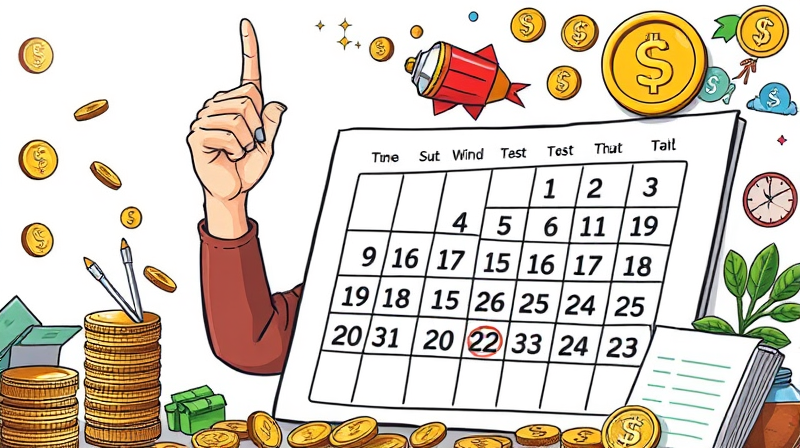Planning for retirement in your 30s or 40s can feel daunting, but it also holds the promise of financial peace of mind decades before traditional retirement age. By following a structured approach rooted in data and expert guidance, you can transform uncertainty into confidence and build a roadmap that sustains you through 30 to 50 years without a workplace paycheck.
Defining Your Retirement Goals and Numbers
Every successful early retiree begins with a clear vision. Estimate your annual expenses, including housing, travel, healthcare, and hobbies. Multiply this figure by 25—the classic “25x rule”—to gauge your initial savings target. For instance, $40,000 in annual costs requires $1 million in savings.
Bear in mind that an early retirement may last longer than 30 years. Many experts now suggest aiming for a lower withdrawal rate or adding a buffer. Using a robust retirement calculator that accounts for inflation, market returns, and lifestyle choices will give you a more accurate projection.
Calculating Your Target Retirement Income
Replacing your pre-retirement income is about more than numbers—it’s about maintain your current lifestyle through decades of change. Traditional guidelines recommend 70%–90% of pre-retirement income, but early retirees often aim for 90%–100%, since they remain active longer.
Geography matters. Annual living costs can differ by tens of thousands of dollars across regions. Analyze local real estate, healthcare, and tax rates to refine your estimates. Factor in variable expenses like travel, hobbies, and family obligations to avoid surprises.
Boosting Your Savings Rate Early
Achieving early retirement hinges on a high savings rate. While most people save 10%–15% of income, aspiring early retirees often dedicate 20%, 30%, or more. By prioritizing savings, you harness the power of compound interest and shorten the time to financial independence.
Maximize every opportunity to accelerate your nest egg growth:
- Contribute to employer-sponsored plans (401(k), 403(b)) up to the match.
- Fund IRAs and Roth IRAs for tax diversification.
- Use HSAs for triple-tax-advantaged health savings.
- Open a taxable brokerage account for flexible liquidity.
Strategic Investing and Diversification
Invest aggressively when you’re young to outpace inflation. Allocate a significant portion to equities, then gradually shift toward bonds and cash as you near retirement. A diversified portfolio weathers market cycles more smoothly and reduces the risk of depleting your assets too quickly.
Tax-advantaged accounts boost compounding. Fill your 401(k), IRA, Roth IRA, and HSA annually. If you exceed those limits, taxable accounts offer penalty-free withdrawals before age 59½—an essential feature for those who retire early.
Balance growth and risk with a clear glide path. As you approach your goal, consider rebalancing into more stable asset classes. This disciplined approach ensures you allocate for growth and safety, even during market volatility.
Dynamic Spending and Withdrawal Strategies
Rigid withdrawal plans can leave you vulnerable to market downturns. Instead, adopt a dynamic withdrawal allocation strategy: increase spending when investments perform well and tighten budgets in lean years. This flexible method extends the life of your portfolio and reduces the risk of running out of funds.
Maintain a cash reserve for unexpected costs or market drops. A buffer of six to 12 months of expenses prevents you from selling investments at a loss and provides peace of mind during turbulent times.
Health Care and Insurance Planning
Healthcare can be one of the largest early retirement expenses, especially before Medicare eligibility at 65. Explore coverage options on the ACA marketplace, COBRA continuation, or private plans. Estimate premiums, deductibles, and out-of-pocket maximums to build a realistic budget.
An HSA not only saves on taxes but also accumulates funds to cover medical costs tax-free. By maximizing HSA contributions, you create a dedicated pool for healthcare spending without tapping your investment accounts.
- ACA marketplace plans for subsidized coverage.
- COBRA continuation for seamless employer coverage.
- Private insurance for tailored networks.
- HSA for tax-free medical savings.
Plan for healthcare costs early to avoid gaps and protect your nest egg from high medical bills.
Proactive Tax Planning
Tax strategy can add years to your nest egg. Early retirement allows you to choose the timing and type of withdrawals. Use Roth IRA conversions in low-income years, harvest capital gains and losses strategically, and optimize Social Security timing to minimize lifetime taxes.
Asset location matters: hold tax-inefficient assets in tax-deferred accounts and tax-efficient, dividend-focused investments in taxable accounts. This approach helps you keep more of your gains and sustains your portfolio over the long haul.
Flexibility and Continued Income Options
For many early retirees, the transition includes part-time consulting, freelancing, or passion projects. This approach provides additional income, social engagement, and a sense of purpose, all while preserving your retirement assets.
Consider side income as an insurance policy. Even modest earnings can cover everyday expenses, delay Social Security claims, and reduce sequence-of-return risk in the early years of retirement.
Explore part-time consulting gigs or entrepreneurial pursuits to stay active and financially secure.
Monitoring Progress and Adjusting the Plan
An effective retirement plan is never static. Conduct regular annual plan reviews to track savings, reevaluate goals, and adjust assumptions for inflation and market performance. This habit ensures you stay on course and adapt to life’s changes.
Engage a trusted financial advisor for periodic check-ins and scenario modeling. Professional guidance tailored to your unique situation can reinforce your confidence and fine-tune strategies as tax laws and markets evolve.
Conclusion: Embarking on Your Early Retirement Journey
Preparing for retirement early demands discipline, education, and adaptability. By defining clear goals, maximizing savings, investing wisely, and planning for healthcare and taxes, you set the stage for a secure, fulfilling future. Embrace the journey with optimism—every saved dollar and informed decision brings you closer to the freedom and joy of early retirement.
References
- https://www.mutualofomaha.com/advice/retirement-planning/retiring-early/want-to-retire-early-try-this-step-by-step-guide
- https://www.nerdwallet.com/article/investing/retirement-planning-an-introduction
- https://www.investopedia.com/fa-one-thing-retiring-in-2025-11723573
- https://www.morningstar.com/retirement/4-key-decisions-early-retirement
- https://www.kiplinger.com/retirement/how-to-retire-early
- https://www.fidelity.com/learning-center/personal-finance/how-to-retire-early
- https://www.troweprice.com/personal-investing/resources/insights/6-steps-to-achieve-financial-independence-and-retire-early.html










